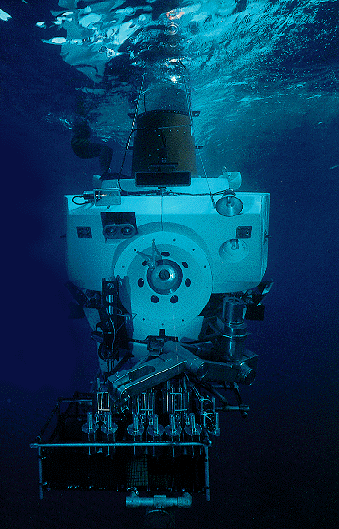 |
A. Cover Unit Goal and all Lesson Objectives with students
- Present "Mars Of The Mind" Unit goal with students.
- Present the objectives for each lesson.
|
 |
B. Introduce Lesson 1: Blast Off! to students
- Review lesson objectives.
- Highlight the main lesson activities students will engage in:
- Reading about inventions and discoveries throughout history which changed man's view
of reality.
- Locating their own examples of inventions or discoveries which changed man's view
of reality.
- Instruct students to log on to the Internet.
- Instruct students to access the Blast Off! URL.
- Monitor student progress by moving about the computer lab, answering any questions and
addressing any technology problems.
|
 |
C. Debrief activities from Lesson 1 with students
- Ask the class what they thought about the discoveries and inventions presented in the lesson.
Select two or three students to answer.
- Ask each student to share the discovery or invention he or she located which was of personal
significance to them. Ask each student how this discovery or invention changed man's view
of reality.
|
|
 BREAK BREAK |
 |
D. Introduce Lesson 2: Picture This! to students
- Read the introduction on the Picture This! web page.
- Look at the three graphics of Mars. Notice the dates.
- Review the thought questions under the graphics.
- Start by clicking the "orange" link for Giovanni Schiaparelli (under the
graphics). Read about him. If you have time, go to the links for more
information.
- Go back to the Picture This! page. (Use the TOP button or the navigation
buttons in the left column.)
- Think about the thought questions.
- Repeat the process with the Lowell and Viking links.
|
 |
E. Debrief activities from Lesson 2 with students
- Review the thought questions.
- Mentally answer them or jot down notes on paper.
- If in a group, discuss your answers to the questions with the group.
|
|
 BREAK BREAK |
 |
F. Introduce Lesson 3: Hypothesize That! to students
- Prior to allowing students to gain access to the Hypothesize That! segment of "Mars Of
The Mind", give the students the following scenario: You want to rent a
particular movie for tonight -- so, what do you do?
- Allow students to collaborate with one another in order to devise a plan.
Ask the students to share their ideas with the class.
- Explain to students that without even knowing it, they probably used the
steps in the scientific method to solve their problem.
- Allow students to access the Hypothesize That! web page.
- Recount the steps in the scientific method (the example provided is a movie
rental situation), especially focusing on the hypothesis stage.
- Allow students to visit additional links related to the scientific method.
|


| G. Debrief activities from Lesson 3 with students
- Recall information learned in Blast Off! and Picture This!
- Learners should read the scenario that asks them to hypothesize about a
new discovery scientists will make to support exploration of Mars and what
new truths may be derived from this discovery.
- Allow learners to write or draw a description of their hypothesis using a
writing or drawing program.
- After completing the project, allow students to go from computer to computer
in order to view and critique the work of others. Students should place a
sticky note on the screen of each work they view with positive reinforcement
and ideas for improvement.
- Allow students to amend their projects.
- Instruct students to send writings and drawings via email to the Gallery.
- Allow students to view the Gallery to compare and contrast their efforts.
|



 BREAK
BREAK

 BREAK
BREAK

